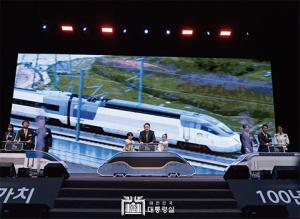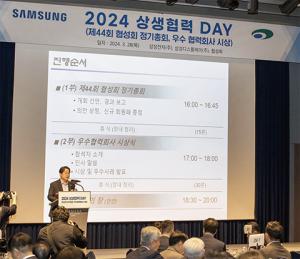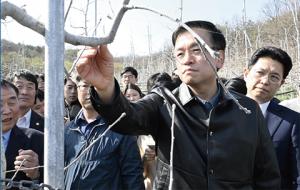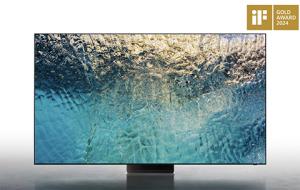 |
||
지도의 역사는 곧 인류의 역사다. 인류가 농경생활을 시작한 이래 토지는 그 사회의 경제력과 노동력을 가늠하는 지표였으며, 중앙집권적 체제의 ‘국가(國家)’가 성립되면서 지리적 정보는 국가 경영의 중요한 기초 자료로 활용되어 왔다. 때문에 현대를 살아가는 우리들은 옛 지도를 통해 당대의 사람들이 어떤 시각으로 세계를 바라봤는지, 어떤 가치 체계와 신념을 가지고 있으며, 주변 지역 및 국가와 어떤 관계를 맺어왔는지를 알 수 있다. 이에 이번호 <월간 파워코리아>에서는 한국의 고지도가 가진 특징, 그 중에서도 특별한 가치를 지닌 「동여비고」를 집중 조명해보았다.
당대 과학과 예술, 사상의 정점, ‘고지도’
고지도(古地圖)는 당대의 과학과 예술, 그리고 사상이 만나는 지점에 위치한다. 지도를 제작하기 위해선 거리와 모양, 크기와 방위 등을 정밀하게 측정할 수 있어야 함은 물론, 이를 회화적 언어로 표기하기 위한 기술, 지도 제작의 목적에 부합하는 중요한 가치를 선별하는 시각이 필요하기 때문이다. 이러한 지도를 통해 사람들은 눈으로는 보이지 않는 사회와 국가, 영토의 개념과 소속감을 공유할 수 있었으며, 주변의 다른 국가와의 관계를 정립해나갈 수 있었다.
동아시아 문화권에서 중요한 위치를 차지하는 한국 고지도의 역사는 국경이 확립되기 시작한 삼국시대로 거슬러 올라간다. 중국의 역사서 『구당서』에는 고구려 영류왕 11년(628)에 당나라에 사신을 보내면서 「봉역도」라는 고구려 지도를 보냈다는 기록이 나온다. 이는 국경이 맞닿아 있는 타국에 자국 영토의 경계를 알리기 위함으로, 국제관계에서 지도가 이 같은 방식으로 활용됐다는 사실은 북한 평안남도 순천군의 고구려 고분에서 중국 요동성시의 그림지도가 발견된 바 있다는 것으로도 잘 알 수 있다. 백제와 신라 또한 『삼국유사』, 『삼국사기』 등의 문헌에서 지리지 편찬 사실을 찾아볼 수 있으며, 고려 때에도 목종 5년(1002)에 거란에 고려지도를 보낸 일과 의종 2년(1148)에 이심, 지지용 등이 송나라 사람과 공모하여 지도를 몰래 반출하려다 적발된 일이 『고려사』에 기록되어 있다. 고려 현종 때 제작된 「5도양계도」는 조선 건국초기 지도 제작의 기본도가 되었을 것으로 추정되고 있다. 그러나 전 국토를 황폐화시키며 수차례에 걸쳐 이어진 전란 속에서 종이 위에 그려진 지도는 취약할 수밖에 없었고, 조선시대 이전에 그려진 지도는 현재 남아있는 것이 없는 상황이다.
지도 제작이 활발히 이뤄진 조선시대 최초의 지도는 태종 2년(1402) 의정부에서 바친 「본국지도」를 꼽는다. 조선 태조가 한양으로 천도하고 행정구역을 새롭게 개편함에 따라 이를 반영한 지도를 새롭게 제작해야할 필요성에 의해 만들어졌으나, 고려 말 제작된 지도를 기본으로 하고 있는 탓에 개편된 조선 행정체계의 실정을 충분히 반영하지 못했다. 이에 세종 16년(1434) 평안도와 함경도, 4군6진 지역을 포함한 보다 정확한 지도 제작이 명해졌으며, 세조 9년(1463) 양성지, 정척에 의해 조선 초기의 표준지도라 할 수 있는 「동국지도」가 완성된다. 「동국지도」는 각 지방수령으로부터 취합된 지방의 위치와 산맥의 방향, 인접한 군과의 접경을 자세히 담고 있으며, 천문관측을 통해 한반도의 길이를 알아낸 과학적인 지도로 손꼽히나 현재는 남아있지 않다. 이후 성종 12년(1481)에는 각 도의 지리, 풍속, 인물 등을 자세하기 기록한 지리서인 「동국여지승람」이 편찬되었으며, 명종 12년(1557)에는 동국지도의 전통을 이은 「조선방역도」가 제작되었다. 영조 33년(1757)에는 실학자 정상기의 「동국대지도」가 평지와 산간의 측량법을 다르게 적용한 ‘백리척’을 사용해 지도 제작 수준을 한 단계 끌어올렸다는 평을 받았으며, 이는 조선 후기 제작된 대부분의 지도에 영향을 주어 김정호의 「대동여지도」(1861)가 탄생할 수 있는 토대를 되었다.
한 폭의 산수화를 보는 듯한 아름다움
앞서 설명한 것처럼, 조선시대는 지도 제작이 가장 활발하게 이뤄진 시기이다. 이는 현존하는 고지도의 대부분이 조선시대에 만들어진 것이기 때문이기도 하지만, 실제로 문헌을 살펴보면 역대 임금들 중 상당수가 지도 제작에 많은 관심을 가지고, 끊임없는 개정과 보완 작업을 펼쳐왔다는 기록을 찾아볼 수 있다. 세계를 그린 천하도와 군사지역 및 변경지역을 그린 관방지도, 우리나라 전체를 그린 전국도 뿐 아니라 각 도별 지도와 지방 군현지도 등이 다수 제작되었다는 점이 그 증거다. 특히, 조선시대의 고지도는 이웃의 중국이나 일본, 멀리 서양의 고지도와는 다른 우리만의 독특한 특징을 지니고 있다는 점에서 주목받는다.
먼저, 대부분의 지도가 전담 기관에 의해 제작된 것이 아닌, 여러 관료들의 공동 작업을 통해 제작되었다는 점이다. 당시의 지도 제작에는 제작을 주도하는 관료와 더불어 그림을 그리는 화원, 풍수지리를 전담하는 상지관, 측량을 담당하며 계산에 능한 산사 등의 실무진이 참여했다. 산천의 형세를 상지관이 파악하면 산사가 구체적으로 방위나 거리들을 측정한 후, 그림에 정통한 화원이 직접 지도를 그리는 방식을 취한 것이다. 특히, 풍수지리 전문가인 상지관의 참여는 중국과 일본의 고지도에 산이 단독적으로 그려진 것과는 달리, 산맥과 강줄기를 중요하게 표기하는 요인이 되었다. 때문에 조선시대 고지도의 대부분은 과학적인 정밀도와 더불어 마치 한 폭의 산수화를 보는듯한 아름다움으로 그 뛰어난 예술적 가치를 인정받고 있다.
이 뿐 아니라, 고지도는 당대의 문화, 인구, 생활상을 엿볼 수 있는 훌륭한 사료인 동시에 현대사회에 이르러 빈번히 발생하고 있는 영토분쟁에서 중요한 근거자료가 된다. 그리고 이는 우리나라 뿐 아니라 세계 각국 간 벌어지는 분쟁에도 실제 적용되고 있는 부분이다. 국제법상 영토 규정에 가장 큰 효력을 발휘하는 것은 분쟁 당사국 간에 맺은 국경 조약이지만, 이 조건이 성립하지 않을 경우 국가가 편찬한 관찬지도가 영유권의 증거가치로 인정받을 수 있는 결정적 자료로 부각된다. 실제로 센카쿠 열도를 둘러싼 중국 대 일본·미국의 대립이나 남중국해를 둘러싼 중국, 대만, 동남아 4개국 간 갈등, 일본과 러시아 사이의 쿠릴열도 분쟁 등이 그 예이다. 우리나라 또한 국민 모두가 잘 알고 있는 ‘독도 영유권 분쟁’이 지난 50년 넘게 이어지고 있다. 이러한 상황에서 지난 1990년대 말 발견되어 그 역사적 가치를 인정받은 ‘보물 1596호’ 「동여비고(東輿備考)」는 한·일 양국 간 영토분쟁의 불씨를 잠재울 중요한 자료로 평가된다. 수록된 60장의 지도 중 <울진현도>에 동해상의 ‘무릉도(武陵島)’와 ‘울릉도(鬱陵島)’, 두 개의 섬이 분명하게 나타나 있기 때문이다.
한국사를 다시 쓸 획기적인 발견
「동여비고」는 조선 초기에 편찬된 지리서 「동국여지승람」과 한 벌로 제작된 지도첩이다. 동국(東國)에서 ‘동(東)’자를, 여지승람(輿地勝覽)에서 ‘여(輿)’자를 따왔으며, ‘비고(備考)’라는 명칭은 참고가 되는 자료라는 뜻이다. 이 같은 참고 서적이 필요했던 까닭은 「동국여지승람」에 전국지도와 도별지도를 포함한 <동람도>가 수록되어 있으나, 지리상의 기밀이 일반에 알려지는 것을 막기 위해 전국 산천의 제사 지내는 곳만을 표기해놓았기 때문이다. 이에 따라 「동여비고」는 진한·마한·변한 등 3한의 경계를 구분한 <진마변삼한분계지도>와 같이 삼국시대나 고려시대의 강역과 고현(古縣)의 명칭, 위치 등을 기록한 역사지도, 전국의 산과 강 등을 개괄적으로 그려놓은 <국조팔도총도>, 한양 도성의 위치와 형태, 크기, 색깔, 명칭 등을 세세하게 기록한 <도성도>, 일본의 주요 지역을 표기한 <왜국팔도육십육주지도> 등을 수록하고 있으며, 조선시대 지방행정의 기본 단위인 부·목·군·현을 세세하게 기록하여 그린 <군현도>의 사료적 가치가 높이 평가받고 있다. 지도에 표기된 지명 및 명칭이 변경된 시기나, 각종 시설물 등의 건립시기 등을 고려할 때 숙종 8년(1682)에 제작된 것으로 추정되는 「동여비고」는 김정호의 「대동여지도」보다 무려 180년 이상 앞서 있는 귀중한 사료라 할 만하다.
특히, 주목할 만 한 점은 위에서 언급한 울릉도, 독도 표기와 함께 북쪽의 만주 일대와 남해의 대마도까지 우리 영토로 기록되어 있다는 점이다. 이에 대해 일각에서는 한국 지리사를 다시 쓰고, 불분명했던 고대사를 밝혀낼 획기적인 발견이라 평가하기도 했다. 그리고 이는 「동여비고」의 제작 목적과 성격을 고려하면 더욱 부각된다. 동국여지승람의 참고 문헌으로서 제작된 「동여비고」는 제약이나 한계 없이 담아낼 수 있는 한의 모든 정보를 세세하게 기록해 놓았다. 서울에서 수원, 서울에서 경주 등 지역과 지역 간의 거리를 상세하게 표기했으며, 섬의 경우 육지와의 거리를 표기하기도 했다. <군현도>의 경우 각 군현의 명칭을 적고, 그 군현의 별칭을 삼국시대부터 조선시대에 이르기까지 모두 병기(倂記)하고 있다. 또한, 강의 나루터와 크고 작은 사원, 역(驛), 원(院)의 위치와 명칭까지도 일일이 표시되어 있다. 특히, <도성도>의 정확성과 세세함은 「동여비고」의 제작이 왕실에 의해 주도되었음을 짐작케 한다. 요약하자면, 지리적 정보의 치밀함과 상세함, 정확성을 추구했다는 점, 왕실에 의해 주도된 관찬지도일 가능성이 높다는 점에서 울릉도와 독도, 만주와 대마도를 우리 영토로 표기한 것의 신뢰성이 높아진다는 것이다.
「동여비고」의 진정한 가치에 대한 재조명이 필요
하지만 문제는 「동여비고」가 고대사의 진실을 밝혀줄 수 있는 귀중한 사료임에도 그 가치를 정당하게 평가받지 못하고 있다는 점이다. 「동여비고」의 소장자인 장윤석 씨는 “현재 「동여비고」는 전체적인 보관상태가 상당히 좋은 편이지만, 제작 시기와 작자를 특정할 수 있는 부분의 글이 알아볼 수 없을 정도로 훼손되어 있어 ‘작자·연대 미상’으로 취급되고 있습니다. 표기되어 있는 지명이나 한양 도성도의 정확성을 토대로 대개의 제작년도와 왕실과의 관련성을 충분히 추정할 수 있음에도, 이것이 인정받지 못하고 있다는 점이 너무나 아쉽습니다”라고 말했다. 그는 이처럼 안타까운 상황이 벌어지고 있는 이유로 우리의 역사 인식이 지나치게 고착화되어 있다는 점과 학계 내에 공공연하게 존재하는 파벌 문제를 들었다.
한국사 연구의 출발점에는 일제에 의한 식민사관이 존재한다. 일본은 대한제국을 강제합병 한 이후 지배를 정당화하고자 우리의 역사를 마음대로 날조해왔다. 해방 후 이에 대한 바로잡기가 이뤄졌으나, 그 잔재는 아직까지도 남아 우리를 괴롭히고 있다. 저마다의 연구를 통해 수립된 역사관이 다른 학자들이 서로 대립하면서 각자의 파벌을 만들게 되었고, 이러한 갈등과 불화 속에서 역사의 진실을 등한시하며 외면하고 있다는 것이 그의 의견이다.
그는 “해방 직후 이승만 대통령 시절, ‘대마도의 반환요구’가 추진된 적이 있습니다. 당시 해외 열강들이 인정한 동북아시아 국제지도인 ‘삼국접양지도’를 보면 대마도, 독도 등이 모두 우리나라 영토로 분명히 표시되어 있다는 것이 그 근거였죠. 패망 후 위축된 일본의 분위기 속에 실지회복이 가능한 기류가 흘렀으나, 50년 6월 25일 발발한 한국전쟁으로 인해 논의가 묻히고 말았습니다. 만약 당시에 「동여비고」가 세상에 알려져 있었다면, 반환요구가 더욱 힘을 얻고, 지금처럼 독도 분쟁이 발생할 이유도 없지 않았을까란 생각이 듭니다”라고 말했다.
국가의 중요한 문화유산이 지니는 가치는 돈으로 환산할 수 없다. 역사란 곧 그 국가와 민족의 정체성이며, 세계 속에 당당할 수 있는 자부심이기 때문이다. 독립 운동가이자 역사학자인 단재 신채호 선생은 <조선상고사>에서 “역사를 잊은 민족은 재생할 수 없다”고 말했다. 멀지 않은 미래, 「동여비고」의 가치가 수많은 역사학자들에 의해 재조명되어 우리의 잊혀진 역사를 바로잡을 수 있게 되기를 기대한다.
Drawing the truth of ancient history of Northeast Asia on a map
Jang Yoon-suk, the possessor of ‘Dongyeobigo(Reference Atlas of Korea)’
“Old maps give us a hint of science, art and philosophy of the time”
Making a map requires one’s ability to measure accurately the distance, shapes, sizes and directions of the land alongside an eye to discern their values. A map clarifies the borders and help a nation build up diplomatic relations with neighboring countries. The history of old maps of Korea goes back as far as to the three kingdom period. A Chinese old map ‘Gudangseo’ records that the King Youngryu sent an envoy to China with a map of Goguryeo in 628 to make sure the borders. The Baekje Kingdom and The Silla Kingdom also compiled ‘Geography’ according to Samgungnyusa and Samguk Sagi. Goryeosa also records the illegal transfer of a map by Lee Sim and Ji Ji-yong in collusion of a person from Song Dynasty in 1148. But the maps made before The Kingdom of Joseon were all destroyed or missing due to the constant wars and also they were made of papers. ‘Bongukgido (1402)’ is regarded as the first map of The Kingdom of Joseon but the Great King Sejong ordered making a map in 1434 to include Pyongan Province and Hamgyong Province as well as the four and six areas of the lands in the Northern parts. It was 1463 that ‘Donggukjido’, which is regarded as the standard map of the early Joseon Dynasty era, was completed by Yang Sung-ji and Jung Chuck in the 9th year of the King Sejo. It gave details in locations and directions of the mountain ridges and the length of the Korean Peninsula but no trace of the map remained today. However, a series of maps and books were produced thereafter: Donggukyeojiseungram in 1481, Joseonbangyeokdo in 1557, Donggukdaejido by Jung Sang-ki in 1757 and Daedongyeojido (Grand Map of Korea) by Kim Jeong-ho in 1861.
Appreciating the charm of maps drawn like landscape painting
Most remained old maps were made during The Joseon Dynasty era. People’s interest in maps was increased and numerous revisions were carried out while the types of maps were also diversified according to its purpose: military, border areas and region by region. It is notable that they have unique characteristics unlike the maps made in China, Japan or the western world: they are made by bureaucrat groups including drawers, topographers and surveyors instead of making by specific organizations. The role of topographers was especially important as the maps gave details on the ridges of mountains and the courses of rivers. For this reason, the maps made during The Joseon Dynasty era are praised for scientific precision and the landscape painting-like drawing. These maps are being used as reference today to clarify the borders and also as the important evidence in the case that the border agreement between the two countries is no longer working. Territorial dispute is not something that has started recently but from long time ago. Korea also has long been involved in the territorial dispute with Japan over Dokdo. The good news is that ‘Dongyeobigo(Reference Atlas of Korea)’, found in the late 1990s – Treasure No.1596 – is received as an important evidence to settle down the dispute as the map clearly states ‘Mureungdo’ and ‘Ulleungdo’ in the <Uljinhyundo>, one of the 60 maps of ‘Dongyeobigo(Reference Atlas of Korea)’.
The epoch-making discovery that will write a new history of Korea
‘Dongyeobigo(Reference Atlas of Korea)’ is an atlas made as part of Donggukyeojiseungram. ‘Dong’ came from the latter ‘Dong’ and ‘yeo’ from the latter ‘yeo’ and ‘bigo’ means reference. Donggukyeojiseungram contains <Dongramdo> alongside nationwide map and provincial map but the reason it needed a reference map was to prevent geographical secretes from leaking and that was why the map marked ritual points only. In fact, ‘Dongyeobigo(Reference Atlas of Korea)’ contains details of locations, names, mountains, rivers, sizes and shapes and colors and names of the palaces in Hanyang (current Seoul) and even the major regions of Japan. ‘Dongyeobigo(Reference Atlas of Korea)’ is guessed to be made in 1682 and if correct it was made about 180 years before Kim Jeong-ho made Daedongyeojido(Grand Map of Korea) in 1861. It is notable that the map records Ulleungdo, Dokdo, part of the Manchuria and Daemado – Tsushima Island in Japanese – as Korean territories. The map also records the details of distance between Seoul and Suwon, between Seoul and Gyeongju and between the islands and the mainland including the piers of rivers and locations of temples, stations and public facilities. Considering the details in ‘Dongyeobigo(Reference Atlas of Korea)’, the making process can be guessed to be led by the royal family. To sum up, Dongyeobigo(Reference Atlas of Korea) is highly trustable in terms of details it contains and the clear marking of the Ulleungdo, Dokdo, Manchuria and Daemado as Korean territories.
“Studies on true values of ‘Dongyeobigo(Reference Atlas of Korea)’ are needed”
Sadly, ‘Dongyeobigo(Reference Atlas of Korea)’ is not being received as valuable as it must be in reality. Jang Yoon-suk, the possessor of ‘Dongyeobigo(Reference Atlas of Korea)’ says “The overall archiving status is good but the part that states the maker and the year of made is severely damaged and this makes the map obscure in these two things. However, we can guess the approximate year of its making but it is regretful that the map is not recognized due to these obscurities.” Jang points out ‘fixed idea of our history’ and ‘factions between historians’ as the cause of this lack of recognition of the map. There formed a colonial view of the history when it comes to the Korean history study. The Japanese fabricated Korean history after annexing Korea to justify their rule. Despite the effort in making things right after the Liberation, the vestiges of Japanese Imperialism still remains intact today. And this caused factions among Korean historians. “In fact, the request for return of Daemado was pushed forward when Rhee Syng-man controlled the government based on the map ‘Samgukjeopyangjido’ recognized by powerful countries and it included Daemado and Dokdo as Korean territories. But the outbreak of The Korean War buried the discussion. If ‘Dongyeobigo(Reference Atlas of Korea)’ was found earlier and known during the time, the ongoing territorial dispute over Dokdo today might not have happened.” We cannot count the values of national treasures with money. History is the identity of a nation and the people and it is their pride. Shin Chae-ho, an independent activist and historian once said “People who forgot their history have no future”. Therefore, it is worth paying attention to the value of ‘Dongyeobigo(Reference Atlas of Korea)’ in a way to rewrite the history of Korea and make things right.
정시준 기자 jungsijun@naver.com







